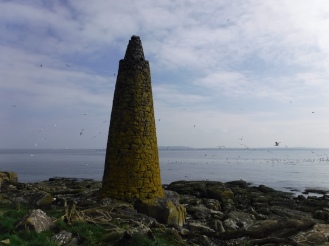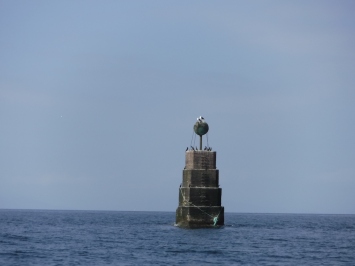I alluded to a search exercise Bob and I carried out over the winter (and have been working towards for the last few years) a couple of posts ago. This exercise had two parts:
- To establish my own definition of what constitutes a “lighthouse”
- To do a scoping exercise, based on the above definition, into which structures I need to add to my “to bag” list
The first point above sounds easier than it is in practice, because there are in fact many factors to take into consideration. Obviously there are the majestic structures (those designed by the Stevensons in Scotland, for example) that we all know and love, but what about the smaller lights on piers or tucked away off of the beaten track? While some might say they don’t deserve to be viewed in the same regard, does it mean they aren’t a lighthouse? And if they are still lighthouses, how do you know? What type of structure do they need to be? What range does their light need to have to warrant such a title, rather than “beacon”, for example?
It would be easy to place a blanket definition from the comfort of your own home, but when you start to look at the lighthouses that exist out there and how there are areas of change (the reduction of light ranges, the discontinuation of lights, etc.) it suddenly becomes more tricky an exercise.
It was only over the winter just gone that I decided on my own definition, which is: A fixed structure that was built to exhibit a light for the purpose of aiding maritime navigation and allows access for at least one person inside any part of it.
This definition is similar to that described by Ken Trethewey in his really interesting article “What Is A Lighthouse? A Modern Definition”, which was published in World Lighthouse Society Magazine (1st Quarter 2013, Volume 11, Issue 1, p5-14). This is available at www.worldlighthouses.org. I would say that the main difference between our definitions is that mine is more inclusive of redundant lighthouses. Of course, this is my personal definition and, while my key interest is in the structures themselves, I recognise that some lighthouse baggers may prioritise other aspects, for example, the light’s range, which would require a different definition.

The reason I have chosen this particular blog post to explain my definition is because the unusual lighthouse on Lady Isle, 2 miles off of the Ayrshire coast, could easily have slipped through the net of my definition! It is such lighthouses as these, which are substantial structures but contain very little in the way of a tower, that is the reason I chose to specify that a person needed to be able to fit into any part of it. You will see from the picture that the lighthouse actually has an external staircase leading up to an enclosed lamp room – the lamp room being the part that qualifies it as a lighthouse within my definition.
A good friend of ours had managed to secure us a boatman to take a group of us out to Lady Isle on a particularly lovely day in April (yes, I am delayed with my posts as usual). While I mentioned above the Lady Isle is only 2 miles off of the coast, our departure point of Largs made for a slightly longer journey (not that we minded as it gave us a view of Little Cumbrae, which we visited last year, and we had an excuse to get an ice cream from Nardini’s once we’d got back).

Fortunately the sea was fairly calm that day, which made for a (mostly) smooth RIB ride and an easy landing on Lady Isle. You cannot help but admire the unique design of the lighthouse with it’s red and white cross-sectional pillar, spiral staircase and lamp room. It certainly dominates the island. Looking back at the history of the island, there were actually two beacons (one of which still remains and the other in the position of the lighthouse) to guide vessels to safety. In 1903 the current lighthouse was introduced.
Although it is so close to civilisation (if you compare it to a number of more remote island lighthouses), you still get a sense of isolation out there and that’s one thing that I particularly like about these places.

On our return journey back to Largs the boatman kindly sailed us fairly close to Lappock Rock Beacon, which is just a mile from the coast. Bob was particularly keen to see this close up and, being brought up in Troon, he had seen it from the mainland for many years. It’s another unique structure and, although it doesn’t qualify as a lighthouse under my definition (there is no internal access) it was still good to see.
We were also treated to close-up views of Horse Isle and the large stone tower at its south end. Since the trip I’ve done some research into this tower to see if it was ever used as a lighthouse or beacon. Some sources suggest it was built as an aid to navigation, but mapping just describes it as a “landmark” or “tower”. If it was used as a lighthouse, and was ever lit in the past, then it would certainly qualify for inclusion on my list. Perhaps one to look into a bit more 🙂


Yes that sounds a fairly decent definition of a lighthouse to me. It does rule out my favourite lighthouse, the Metal Man in Sligo Bay, a 14 foot cast iron statue of a sailor with a light beside him on the plinth, but I’m happy to let him be the exception that proves the rule!
Thank you. I shall have to have a look at the Metal Man. Sounds intriguing!